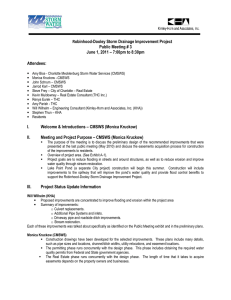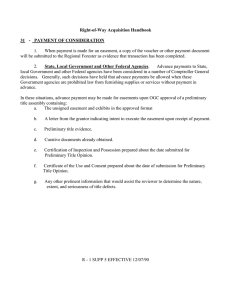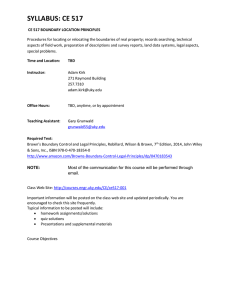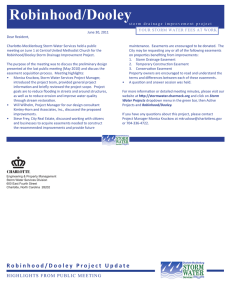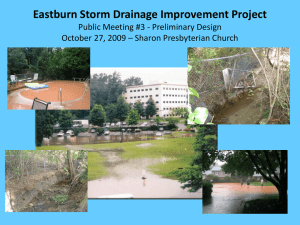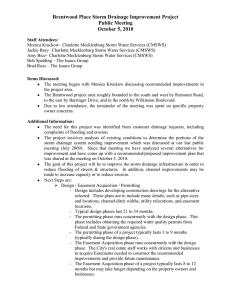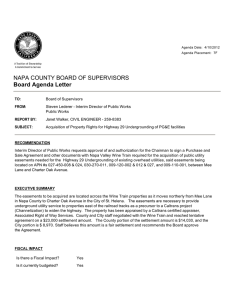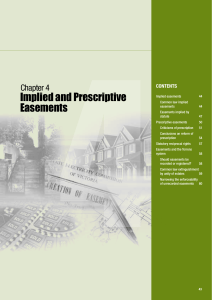_____________________________________________________________________________________ May 10, 2010, 6:30 pm Robinhood/Dooley Stream Walk
advertisement
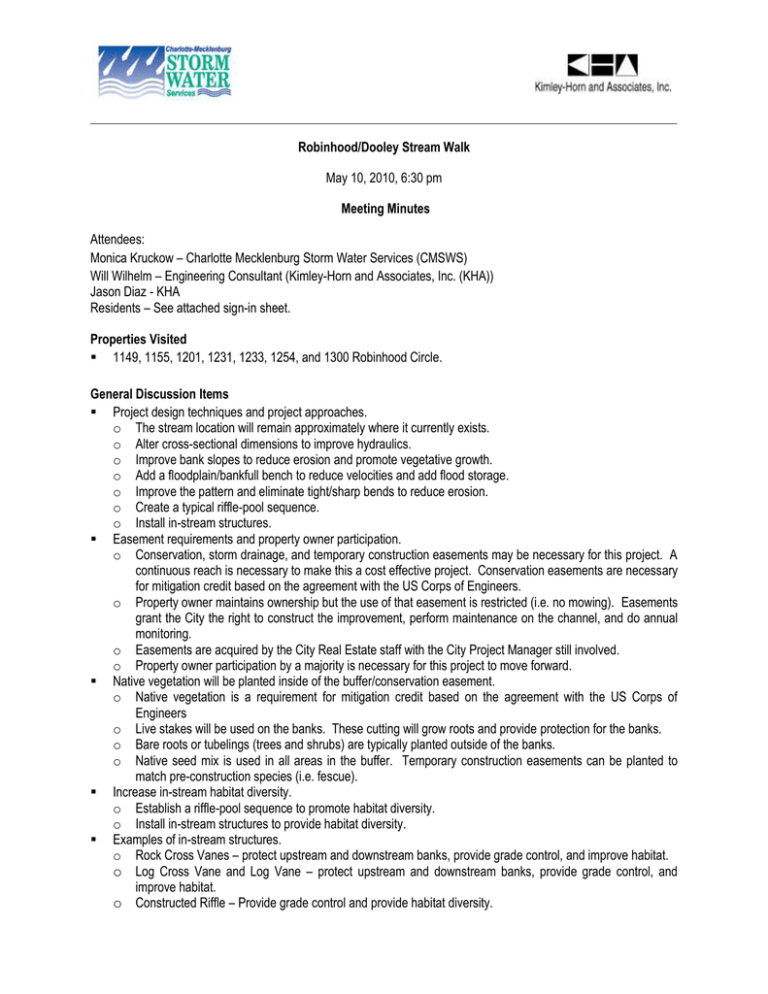
_____________________________________________________________________________________ Robinhood/Dooley Stream Walk May 10, 2010, 6:30 pm Meeting Minutes Attendees: Monica Kruckow – Charlotte Mecklenburg Storm Water Services (CMSWS) Will Wilhelm – Engineering Consultant (Kimley-Horn and Associates, Inc. (KHA)) Jason Diaz - KHA Residents – See attached sign-in sheet. Properties Visited 1149, 1155, 1201, 1231, 1233, 1254, and 1300 Robinhood Circle. General Discussion Items Project design techniques and project approaches. o The stream location will remain approximately where it currently exists. o Alter cross-sectional dimensions to improve hydraulics. o Improve bank slopes to reduce erosion and promote vegetative growth. o Add a floodplain/bankfull bench to reduce velocities and add flood storage. o Improve the pattern and eliminate tight/sharp bends to reduce erosion. o Create a typical riffle-pool sequence. o Install in-stream structures. Easement requirements and property owner participation. o Conservation, storm drainage, and temporary construction easements may be necessary for this project. A continuous reach is necessary to make this a cost effective project. Conservation easements are necessary for mitigation credit based on the agreement with the US Corps of Engineers. o Property owner maintains ownership but the use of that easement is restricted (i.e. no mowing). Easements grant the City the right to construct the improvement, perform maintenance on the channel, and do annual monitoring. o Easements are acquired by the City Real Estate staff with the City Project Manager still involved. o Property owner participation by a majority is necessary for this project to move forward. Native vegetation will be planted inside of the buffer/conservation easement. o Native vegetation is a requirement for mitigation credit based on the agreement with the US Corps of Engineers o Live stakes will be used on the banks. These cutting will grow roots and provide protection for the banks. o Bare roots or tubelings (trees and shrubs) are typically planted outside of the banks. o Native seed mix is used in all areas in the buffer. Temporary construction easements can be planted to match pre-construction species (i.e. fescue). Increase in-stream habitat diversity. o Establish a riffle-pool sequence to promote habitat diversity. o Install in-stream structures to provide habitat diversity. Examples of in-stream structures. o Rock Cross Vanes – protect upstream and downstream banks, provide grade control, and improve habitat. o Log Cross Vane and Log Vane – protect upstream and downstream banks, provide grade control, and improve habitat. o Constructed Riffle – Provide grade control and provide habitat diversity. Citizen Involvement A neighborhood meeting will be held at the 70% design phase. A representative from City Real Estate will be present at the 70% design meeting to discuss specifics about easements. Project Schedule The next phase of the project is the design phase. This includes developing construction drawings for the alternative selected that include many details, such as channel cross-sections/widths, locations of in-stream structures, utility relocations, and easement locations. The design phase typically lasts 21 to 34 months. The permitting phase runs concurrently with the design phase. This phase includes obtaining the required water quality permits from Federal and State government agencies. The permitting phase of a project typically lasts 3 to 9 months (typically during the design phase). The Real Estate phase runs concurrently with the design phase. The City's real estate staff works with citizens and businesses to acquire easements needed to construct the recommended improvements and provide future maintenance. The easement acquisition phase of a project typically lasts 8 to 12 months but may take longer depending on the property owners. After the design plans are finalized and all easements are acquired, the final plans will go out to contractors for them to bid on. By state law, the lowest responsible bidder is awarded the construction contract. The bid phase of a project typically lasts 4 to 5 months. Once the contract is awarded, the project can begin the construction phase. Throughout construction, efforts will be made to minimize disruption to nearby property owners. Construction of proposed improvements will be supervised by City inspectors. Notifications of key construction dates will be mailed to residents prior to construction. Because projects vary in size, the typical construction phase of a project can last from 3 months to over 2 years.
